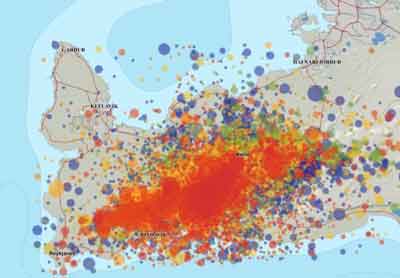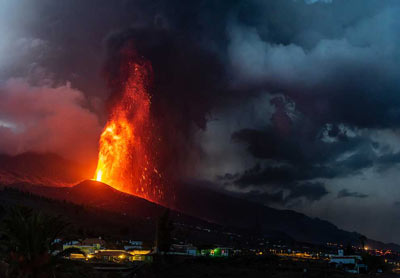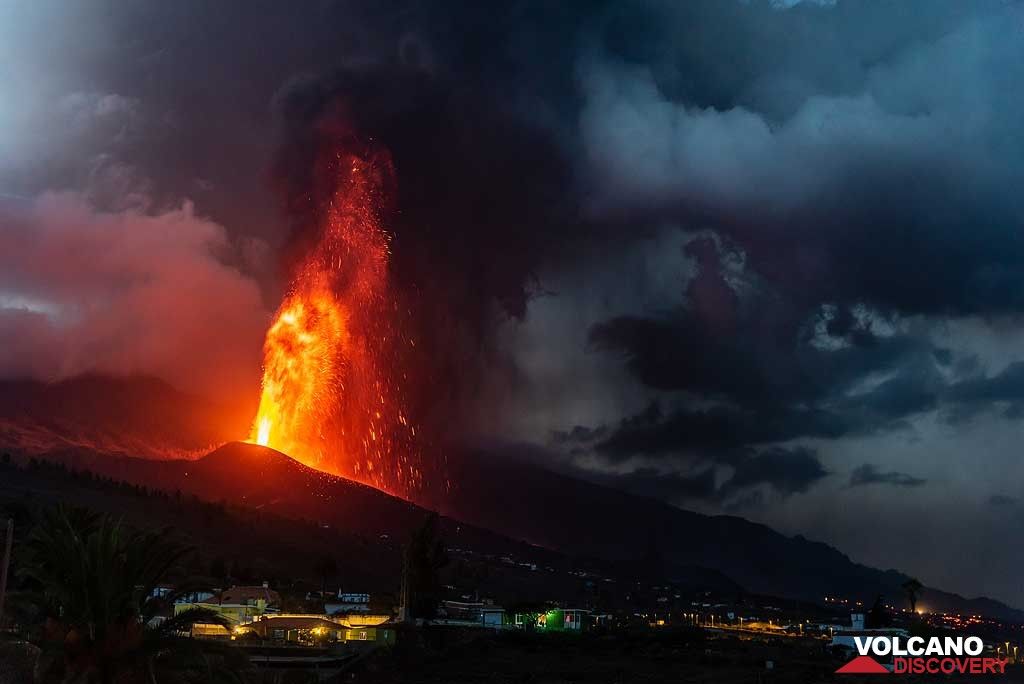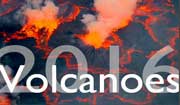(stratovolcano 2763 m / 9,065 ft)
Mount Bachelor (formerly known as Bachelor Butte) in central Oregaon is a symmetrical stratovolcano, which is part of a 25 km long volcanic chain SE of South Sister.
The chain is aligned N-S and consists of the main volcano of Mt Bachelor itself, cinder cones, small shield... [
more info]
(shield volcanoes 2095 m / 6,873 ft)
Belknap Crater volcano is located near McKenzie Pass, north of the Three Sisters volcanoes in Central Oregon. It is the center and source of one of the largest number of geologically recent eruptions in the Cascade Range. It was very active between about 3000 and 1500 years ago.
... [
more info]
(Pyroclastic cone 2024 m / 6640 ft)
[
more info]
(stratovolcano 1230 m / 4,035 ft)
Blue Lake is a series of at least 3 overlapping explosion craters (maars), located along a NE trend slightly east of the crest of the Cascade Range. The best-known crater, Blue Lake Crater contains a blue lake (800m x 300m) and is probably the youngest. It formed by an eruption a... [
more info]
(Volcanic field 1236 m / 4055 ft)
[
more info]
(stratovolcano 663 m / 2,175 ft )
Broken Top in the Three Sisters Wilderness, Oregon, is, as the name suggests, the heavily eroded top of a probably extinct stratovolcano. [
more info]
(cinder cones 1956 m / 6,417 ft)
Cinnamon Butte is one of a group of 3 young cinder cones long a WNW-ESE line immediately west of the Cascade crest and NE of Diamond Lake in Oregon, USA. The other two cones are Thirsty Point and Kelsay Point. [
more info]
(caldera 2487 m / 8,159 feet)
Crater Lake in the southern Cascade Range of Oregon, USA, is one of the most beautiful calderas in the world. It formed by the collapse of a massive stratovolcano known as Mount Mazama about 6850 years ago. The caldera measures 8x10 km in diameter and is filled with a lake of up ... [
more info]
(volcanic field 2163 m / 7,096 ft)
Davis Lake area in Oregon, USA, is a volcanic field with 3 cinder cones and lava flows of three cinder cones and associated lava flows. [
more info]
(volcanic field 1698 m / 5,571 ft)
Devils Garden volcanic field in central Oregon, east of the Cascade Range, is the NW-most of a group of 3 young basaltic lava fields SE of Newberry volcano. It covers 117 sq km and consists of fissure vents and lava flows. [
more info]
(volcanic field 1435 m / 4,708 ft)
Diamond Craters is a 60 sq km volcanic field in SE Oregon, 11 km east of highway 205 and 64 km (40 miles) southeast of the town of Burns. It consists of cinder cones, maars (explosion craters) and lava flows.
Diamond Craters were named after the Diamond Ranch, established i... [
more info]
(volcanic field 1501 m / 4,924 ft)
The Four Craters lava field, along with Devils Garden and Squaw Ridge, is the SE-most of a group of 3 basaltic lava fields SE of Newberry volcano in the High Lava Plains of central Oregon.
The Four Craters lava field contains 4 spatter cones along a 4-km-long NW-SE-trendin... [
more info]
(Volcanic field 1501 m / 4925 ft)
[
more info]
(Pyroclastic cone 1986 m / 6516 ft)
[
more info]
(Volcanic field 1418 m / 4652 ft)
[
more info]
(stratovolcano 3199 m / 10,495 ft)
Mt Jefferson volcano, one of the lesser known Cascade volcanoes, is the second highest mountain in Oregon. Although it is deeply eroded and has probably not erupted for at least about 1000 years, it is still considered active. [
more info]
(volcanic field 1473 m / 4,833 ft)
Jordan Craters in SE Oregon is a field of well-preserved basaltic lava flows and scoria cones covering 250 sq km. The last eruption took place at Coffeepot Crater at the NW end of the lava field about 3200 years ago and produced a lava flow covering 75 square km and containing 1.... [
more info]
(Volcanic field 1711 m / 5614 ft)
[
more info]
(stratovolcano 3426 m / 11,240 ft)
Mt Hood 75 km ESE of Portland is Oregon's highest peak and one of the most prominent of the Cascades volcanoes. It is probably the only volcano in Oregon which has erupted in historic times (last confirmed activity in 1865-66).
Andesite-dacite lava domes form the glacially... [
more info]
(shield volcano 2376 m / 7,794 ft)
Mount Washington is a composite volcano in the Cascade Range of Oregon. The mountain dates to the Late Pleistocene. However, it does have a line of basaltic andesite spatter cones on its northeast flank which are approximately 1,330 years old according to carbon dating. The main ... [
more info]
(Volcanic field 2502 m / 8209 ft)
[
more info]
(shield volcano, caldera 2434 m / 7,985 ft)
Newberry volcano east of the Cascade Range in Oregon, is one of the largest volcanoes on the US mainland. It covers about 1600 km2 and contains a large caldera, Newberry Crater, that was created several 100,000 years ago by a series of devastating eruptions.
The volcano las... [
more info]
(complex volcano 3074 m / 10,085 ft)
North Sister volcano, along with Middle and South Sister part of the Three Sisters Group in central Oregon Cascades. The group forms a prominent landmark in the Central Oregon Cascades.
North Sister is the glacially eroded remnant of a andesitic-dacitic stratovolcano, expos... [
more info]
(Volcanic field 1700 m / 5577 ft)
[
more info]
(cinder cones 1664 m / 5,459 ft)
Sand Mountain is a cluster of 23 cinder cones NW of Mt Washington, Oregon. The youngest eruption took place to form Lost Lake cinder cone at the north end of the chain about 2000 years ago. [
more info]
(Volcanic field 1375 m / 4511 ft)
[
more info]
(complex volcano 3157 m / 10,357 ft)
South Sister (also known as Charity) is the highest and youngest of the Three Sisters volcanic group in the central Cascades, Oregon. It dominates the landscape and is a popular destination for climbers and hikers. [
more info]
(lava field, shield volcano )
The Squaw Ridge lava field, also known as the East lava field, together with Devils Garden and Four Craters is the middle of a group of 3 young basaltic fields located in the High Lava Plains SE of Newberry volcano. It forms a small shield volcano from which lava flows have flowe... [
more info]
(Complex volcano, cinder cones, shields, fissure vents 3159 m / 10364 ft)
The Three Sisters volcano group in Central Oregon consists of several vents and volcanic edifices including the stratocones North Sister, as well as the younger Middle Sister and South Sister, which forms its summit.
Volcanic activity occurred frequently from various vents... [
more info]
(Volcanic field 1590 m / 5217 ft)
[
more info]



